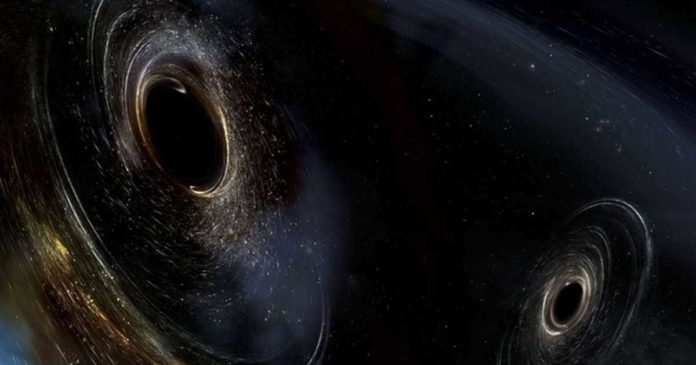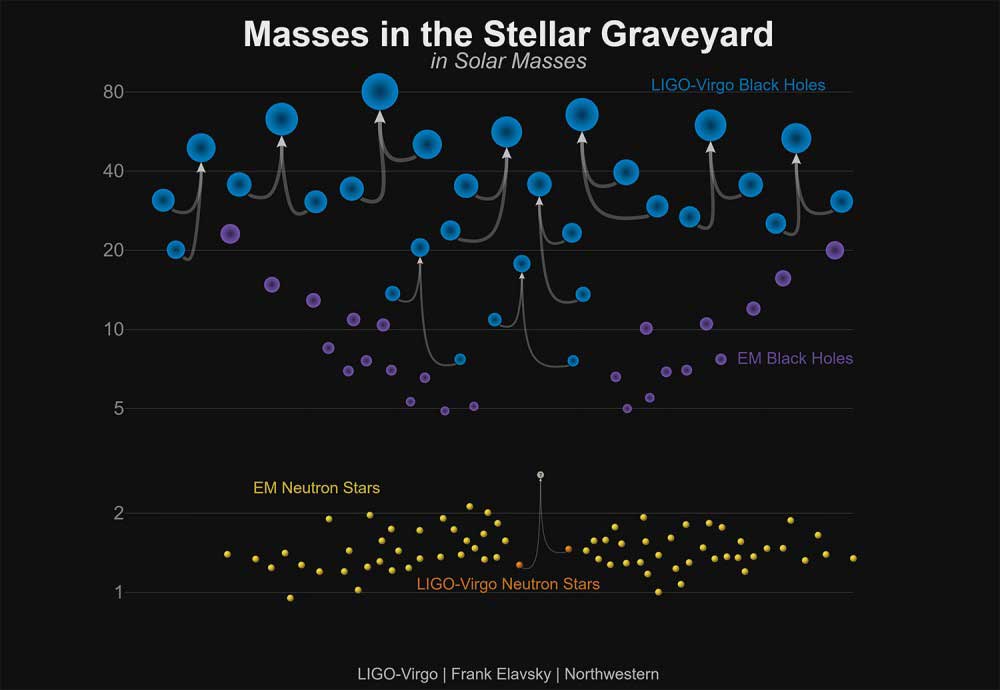The National Science Foundation’s LIGO (Laser Interferometer Gravitational-Wave Observatory) and the European-based VIRGO gravitational wave detectors have detected gravitational waves from a total of 10 stellar-mass binary black hole mergers and one merger of neutron stars. These new events are known as GW170729, GW170809, GW170818, and GW170823, in reference to the dates they were detected.
Four additional detections provide LIGO Scientific and Virgo Collaboration (LVC) scientists a sufficient amount of data to infer properties that apply to all stellar black holes. Most notably, the Compact Binary Coalescence Rates and Populations subgroup, co-chaired by Northwestern University’s Chris Pankow, deduced that almost all stellar black holes weigh less than 45 times the mass of the sun.
Pankow said, “Gravitational waves give us unprecedented insight into the population and properties of black holes. We now have a sharper picture of both how frequently stellar mass binary black holes merge and what their masses are. These measurements will further enable us to understand how the most massive stars of our Universe are born, live and die.”
GW170729, detected in the second observing run on July 29, 2017, is the most massive and distant gravitational-wave source ever observed. In this merger, an equivalent energy of almost five solar masses was converted into gravitational radiation.
From September 12, 2015, to January 19, 2016, amid the primary LIGO observation keep running since undergoing redesigns in a program called Advanced LIGO, gravitational waves from three binary black hole mergers were distinguished.
During second observation, which endured from November 30, 2016, to August 25, 2017, yielded one binary neutron star merger and seven extra binary black hole mergers, including the four new gravitational-wave events being accounted for now.
GW170814 was the first binary black hole merger measured by the three-detector network and allowed for the first tests of gravitational-wave polarization. GW170817 detected three days after GW170814. It represented the first time that gravitational waves were ever observed from the merger of a binary neutron star system.
A new event, GW170818 was detected by the global network formed by the LIGO and Virgo observatories.
However, the position of the binary black holes, located 2.5 billion light-years from Earth, was identified in the sky with a precision of 39 square degrees.
David Reitze, Executive Director of the LIGO Laboratory, Caltech said, “The work done by Chris Pankow and the Northwestern group lays the foundation for a much deeper understanding of the nature of black holes and the environments in which they form. As LIGO and Virgo resume observing in 2019, we will undoubtedly detect many more binary black hole mergers, and thanks to this research, increase our knowledge of the black hole universe.”
A third observing run of the LIGO and Virgo detectors will begin early in 2019 with improved detections. Given the rate of detections calculated from the previous runs, frequent new detections are expected.
Two papers describing the new findings are available on the arXiv repository of electronic preprints:

